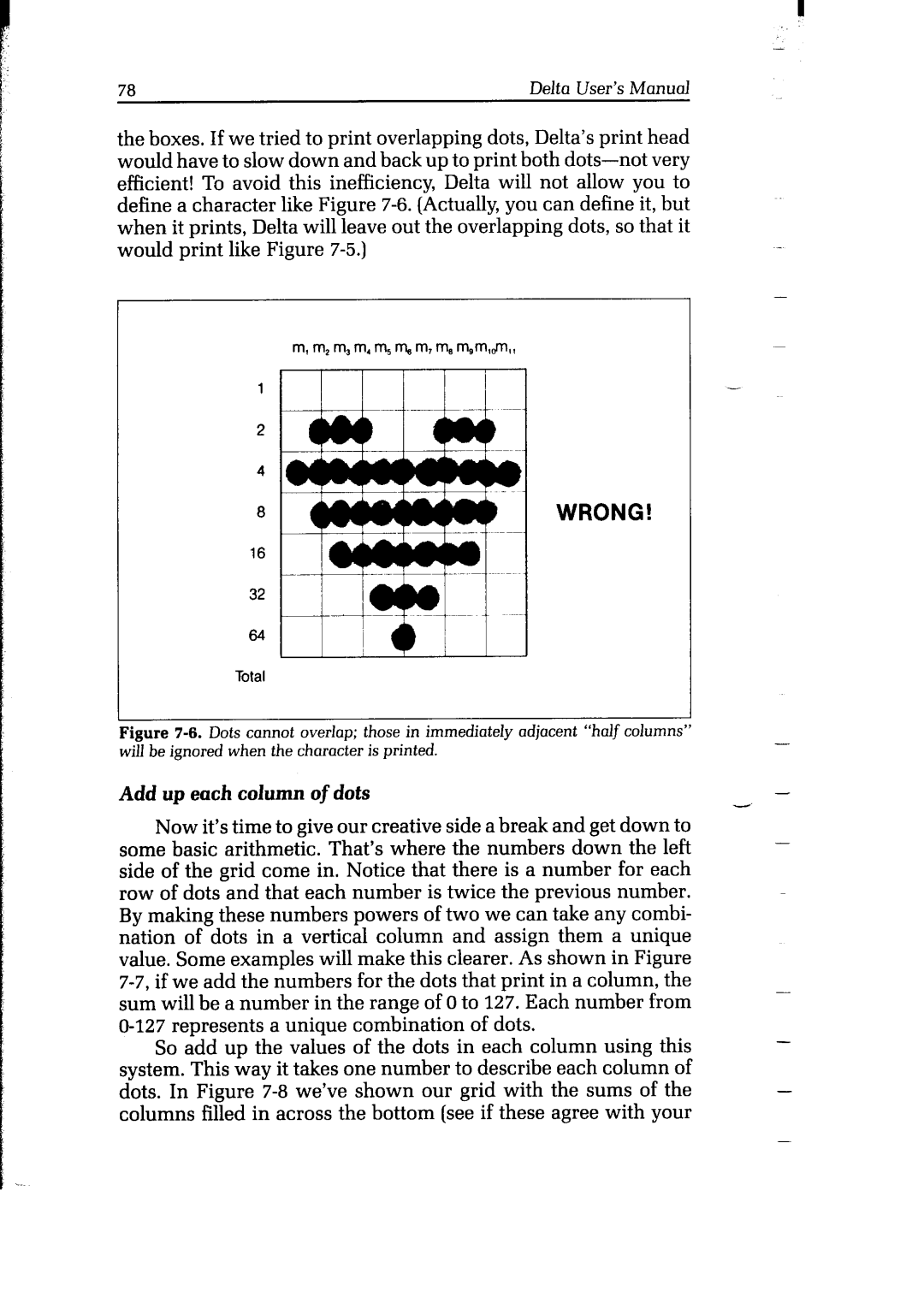
78 | Delta User’s Manual |
the boxes. If we tried to print overlapping dots, Delta’s print head would have to slow down and back up to print both
-
1 | - |
2
4
8WRONG!
16
32
64
Total
Figure 7-6. Dots cannot overlap; those in immediately adjacent “half columns
will be ignored when the character is printed.
-
Add up each column of dots | - |
Now it’s time to give our creative side a break and get down to some basic arithmetic. That’s where the numbers down the left side of the grid come in. Notice that there is a number for each row of dots and that each number is twice the previous number. By making these numbers powers of two we can take any combi- nation of dots in a vertical column and assign them a unique value. Some examples will make this clearer. As shown in Figure
So add up the values of the dots in each column using this system. This way it takes one number to describe each column of dots. In Figure
